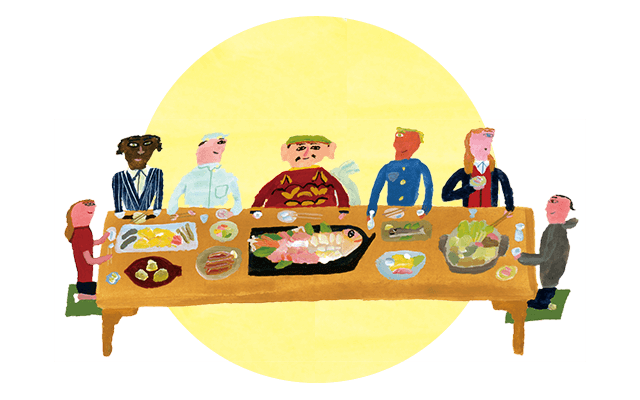
Harima Archives
2022.03.18 Five Unique Rivers

The Unique Histories of Harima Gosen
In the Harima region, multiple rivers connect to the Harima Sea. Of them, five are considered to be the major ones. These are Kakogawa, Ichikawa, Yumesakigawa, Ibogawa, and Chikusagawa Rivers, collectively known as Harima Gosen (the five rivers of Harima). Each of these rivers has its personal history. Additionally, due to their environments, such as water quality and channels, these rivers have significantly contributed to the development of the soy sauce and sake brewing industries. Let’s take a look at their respective characteristics.
Kakogawa, Hyogo Prefecture’s Largest River
Boasting a river basin of 1,730 km2, Kakogawa is the largest river in Hyogo Prefecture. With 110 large and small tributaries, it flows from north to south across the Harima Plains. Agriculture and forestry developed in the river’s upper reaches, while in the middle distances, distinctive industries such as Banshu abacuses, Banshu-ori textiles, and Miki hardware were born. In the river mouth area, wool products and paper manufacturing developed. Currently, this area is an industrial zone where is iron-making, chemical, and energy-related companies gather.
Ichikawa, a River That Grew with Silver Mines
Ichikawa flows in the southwest part of Hyogo Prefecture. According to one account, the name comes from the Harima provincial capital’s market (ichi in Japanese). The lower reaches flowed close to Himeji Castle, but during the Edo period, it was significantly shifted to the east side by the lord of the Harima Domain, Ikeda Terumasa.
Yumesakigawa, a Historical and Religious River
Yumesakigawa is a river whose source is Mount Seppiko, renowned as one of the three famed mountains that have the word “hiko” (the “pikko” in the case of “Seppiko”) in their names. The river boasts a long history with ruins found from the Jomon (ca 10,000 BC–ca 300 BC), Yayoi (ca 300 BC−ca AD 300), and Kofun (ca 300−710) periods showing that people had been living in the river basin area since prehistoric times. Yumesakigawa also has a long religious history. The site is home to Shoshazan Engyo-ji Temple, one of three famous Tendai sect Buddhist temples and is known as the “Mt. Hiei of the West,” and the remains of Aga-mido Temple.
Ibogawa, Where Soy Sauce and Somen Noodles Were Born
The Ibogawa area is believed to have been inhabited from the Paleolithic period, around 20,000 to 30,000 years ago. The river contributed to the livelihoods and industries of people from ancient times, making it a prominent river in the Harima area. Crops such as rice, wheat, and soybeans were grown in the river basin, giving birth to the industry such as soy sauce and koji-making, which utilize these crops. Additionally, the quality of the water, which contains little iron, made it ideal for manufacturing usukuchi (light-colored) soy sauce and hand-pulled somen noodles, significantly contributing to the formation of unique food culture.
Chikusagawa, Selected as One of Japan’s 100 Best Waters
Chikusagawa was selected as one of Japan’s 100 Best Waters. It is said that the river basin was developed by Hatano Kawakatsu, a member of the Hata clan, a group of foreign settlers who came to Japan around the sixth century. There are more than thirty Osake-jinja shrines where Hatano Kawakatsu is enshrined. In the upper reaches, Chikusa-cho, Shiso City is known for producing Chikusa steel, and the ruins of traditional tatara ironworks remain. Kamigori-cho, in the middle distances, is the cradle of the Akamatsu clan. Ako City in the river mouth area is well-known as the home of the Ako Gishi samurai.



